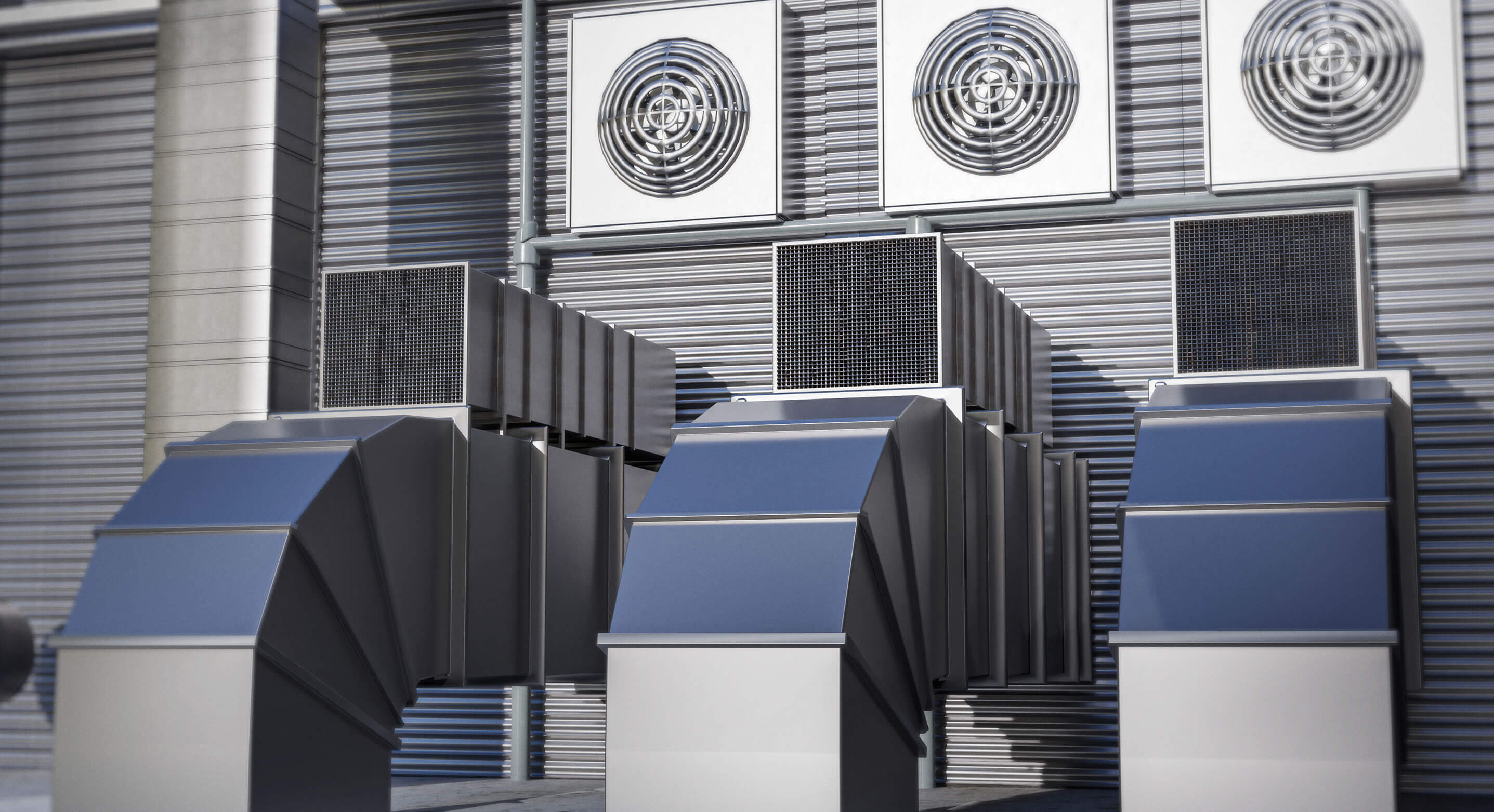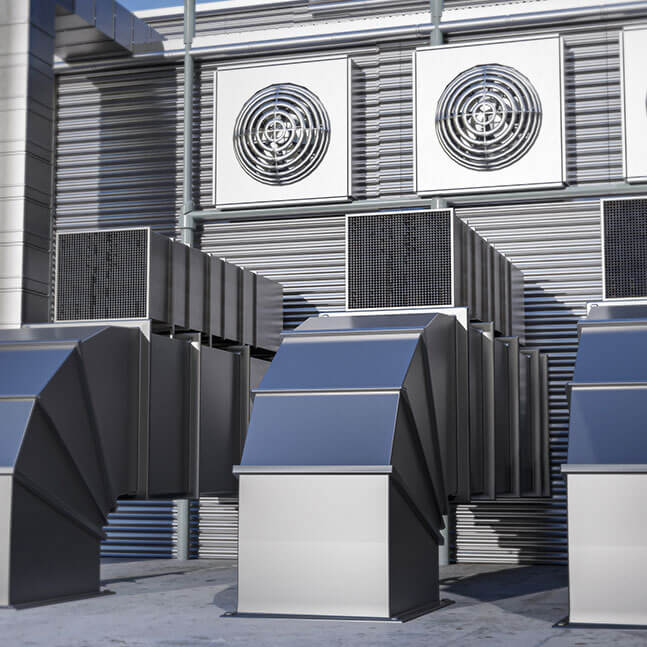News
Energy Efficient Solutions
HVAC systems market is growing with the increasing demand for energy-efficient and sustainable solutions, advancements in technology, and growing infrastructure development. However, the market must also address the challenges it faces to realize its full growth potential. Construction Times finds out.
The Heating, Ventilating, and Air Conditioning (HVAC) is a system that is aimed at providing comfort for indoor areas. Temperature is a factor that affects the performance and health status of many systems. It is important to have an HVAC system in place that keeps the indoor temperature at a desired point. HVAC systems come as cooling systems and heating systems. Cooling systems range from large air conditioning systems to small portable ones that provide air cooling. Heating systems could deliver hot air by pushing it passed some hot surface into the intended area for heating, or could be done through thermal radiation from hot surfaces.
Current market scenario
HVAC market is always growing with the growing infrastructure and real estate segments. This year, with the summer peaking up, there will be an increased need for cooling solutions for residential and commercial segments. Apart from the building infrastructure segment, the airports, metro and industrial infrastructure segments are also emerging as demand drivers for HVAC systems. Environment-friendly features and IoT-based solutions are gaining pace in HVAC systems.
In recent years, building construction gained pace as the construction and infrastructure creation has driven the setting up of more residential and commercial buildings across the country. This has created more demand for suitable HVAC systems in such buildings and structures. Residential buildings segment has witnessed many advancements in terms of modern amenities and design changes to accommodate the growing needs of the advanced facilities. Growing urbanization across the country has brought in more technology and innovations in the buildings sector. Also, the changing weather patterns is demanding more heating and cooling requirements inside the buildings and residential structures. All these factors are driving the demand for a better and suitable HVAC system in buildings and structures.
HVAC appliances are used everywhere, from homes and major stores to workplaces, transportation hubs, and factories. The country’s increasing residential construction sector is responsible for the rising installation rate of HVAC systems in India.
Major demand drivers
According to Nishat Nishoo, Sales Director, 75F Smart Innovations India, HVAC systems have gained popularity over the last decade as a result of technology advancements and increased awareness regarding automation and energy use. “Increased energy demand and expanding urbanization have all contributed to the growth of the country’s building automation business. Demand for smart houses that include lighting and HVAC controls is also increasing in the residential sector, which is resulting in a spike in demand for such appliances,” he adds.
Role of sustainability
Climate change is one of the most significant risks to human survival and well-being globally. Modern, sustainable, and eco-friendly technologies will not only help to clean up the environment but will also allow facility managers to save money on their electricity bills year after year. Nishoo elaborates on some of the environment-friendly features in HVAC systems. “On-command hot water recirculation requires installing an ‘on-command’ pump that links to both cold and hot water lines to ensure effective hot water delivery while also conserving money and energy,” he adds.
According to Nishoo, ice-powered conditioning devices can reduce the amount of energy used for air conditioning by up to 30%. It works by freezing litres of water in a tank overnight, making this ice available to chill the building the next working day. As the peak of electricity usage shifts from on-peak to off-peak hours, ice thermal storage technologies can reduce the power consumption of the HVAC system. Cooling and heating technology that uses hot water as the driving heat source can also help with energy savings. This technique, a low-cost alternative to typical air conditioning machines, operates on waste heat or solar thermal energy.
Emerging technologies in HVAC
Apart from the environment-friendly features mentioned earlier, there are other emerging technology trends in the HVAC industry that are transforming the way HVAC systems operate, according to Manish Walia, Head – Automation, Delta Electronics India Pvt Ltd. He describes new trends emerging in HVAC industry.
Artificial Intelligence (AI): AI is being increasingly used in HVAC systems to optimize system performance and improve energy efficiency. AI algorithms can analyze data from various sensors and make adjustments to the system in real-time to optimize performance and reduce energy consumption.
Internet of Things (IoT): The IoT is revolutionizing the way HVAC systems are designed, installed, and operated. IoT-enabled sensors can be used to monitor system performance and make adjustments to optimize performance and reduce energy consumption.
Augmented Reality (AR): AR technology is being used to improve the efficiency and effectiveness of HVAC system maintenance and repair. AR-enabled glasses or smartphones can provide technicians with real-time information, such as system specifications and maintenance instructions, allowing for faster and more efficient repairs.
Predictive Maintenance: Predictive maintenance uses data analytics and machine learning algorithms to predict HVAC system failures before they occur. This allows for proactive maintenance to be performed, reducing downtime and increasing system reliability.
Wireless Controls: Wireless controls are being increasingly used in HVAC systems to improve system flexibility and reduce installation costs. Wireless controls allow for easy installation and configuration of HVAC systems, reducing the need for complex wiring and expensive infrastructure.
These technologies are transforming the way HVAC systems operate, improving energy efficiency, system performance, and reducing maintenance costs.
Climate change and impact on HVAC systems
The changing weather conditions, particularly the increasing frequency and intensity of extreme temperatures and weather events, are putting significant pressure on HVAC systems. Gaurav Bali, Co-founder and CEO, Enlite, elaborates, “HVAC systems are an essential component of buildings and their operation, but they are also sensitive to changing weather conditions. As weather patterns become more extreme and unpredictable, it is becoming increasingly important for building owners and operators to consider how these changes may impact their HVAC systems and plan accordingly.”
Raman Sapru, Director – Design & Engineering, K Raheja Corp, highlights how they are addressing these challenges, “We are taking proactive measures to prepare our HVAC systems for the upcoming summer season. We are conducting regular maintenance and inspections to ensure that our systems are functioning at optimal levels. We are also exploring new technologies and strategies to improve the energy efficiency of our HVAC systems and reduce their environmental impact.”
Market outlook
According to a Research & Market report, The HVAC systems market in India is poised to grow by $2.77 bn during 2022-2026, accelerating at a CAGR of 9.97% during the forecast period. Gaurav Mathur, Head – Area Sales Development, Commercial Building Segment (CBS)- INDO Region, Grundfos Pumps India, adds, “The HVAC market in India has been growing steadily in recent years and will continue to grow at a faster pace in the next decade, driven by factors such as urbanization, rising living standards, and increasing awareness about energy efficiency and indoor air quality.”
“The outlook for the HVAC systems market is positive, driven by the increasing demand for energy-efficient and sustainable solutions, advancements in technology, and growing infrastructure development. However, the market must also address the challenges it faces to realize its full growth potential,” Walia points out with a note of caution.
Source: Construction Times



